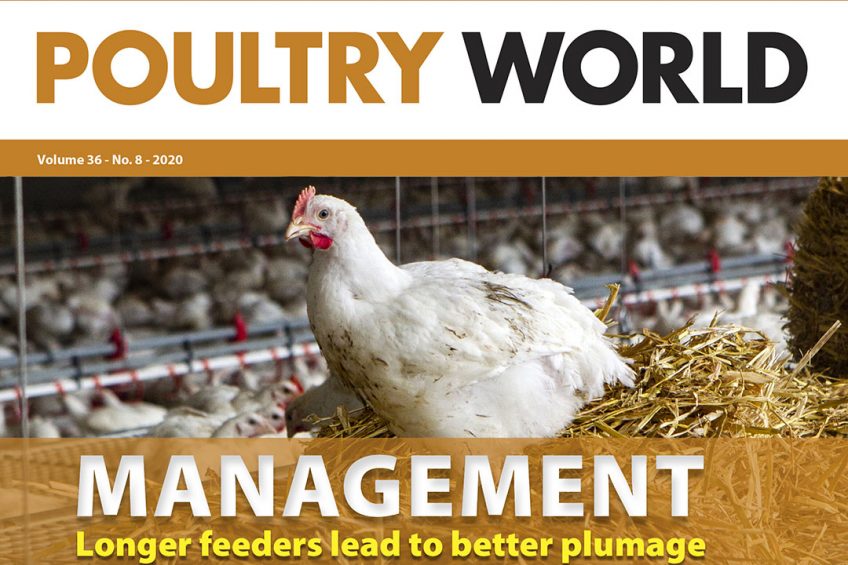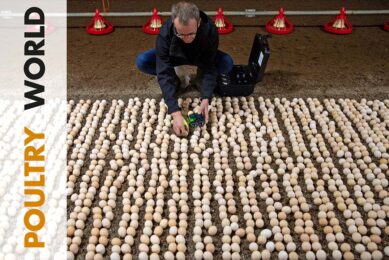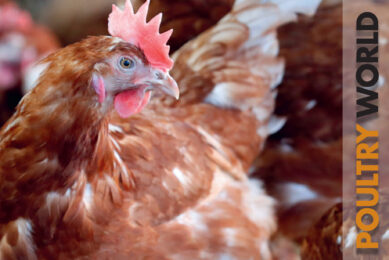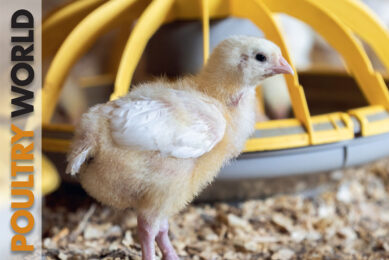Poultry World edition 8 of 2020 is now online

In this edition of Poultry World, we discuss how a hen’s plumage affects her wellbeing and performance, and how longer feeders lead to better plumage. Poultry World travels to Poland where the poultry industry is ready to regain its position on the global market, and to Belgian to a unique location for a poultry farm – an airbase.
View Poultry World’s digital magazine
Polish poultry industry is ready to grow again
Following a devastating blow over the past 6 months due to the AP pandemic and then Covid-19, the Polish poultry industry is on the road to recovery. Companies are ready to regain their position on the global market, and plan to expand into Africa and Asia. However, obstacles remain.
Biosecurity by military design
A Belgian broiler farm is in a unique location – on an airbase. Should the farmer wish to expand, he would need a municipal permit as well as permission from NATO.

Longer feeders lead to better plumage
A hen’s plumage plays a big role in her internal thermal insulation. Hens that are 50% bald consume almost 20% more feed compared to laying hens with intact plumage. For breeder hens, poor plumage leads to reduced fertilisation.

Improving male management with male restaurant feeding designs
In this article, Poultry World looks into 2 male restaurant feeding designs.

View Poultry World’s digital magazine
Early feeding, feed quality and safety in AMR management
Important factors to note to reduce antibiotics in broilers are early feeding, feed quality, physical structure and safety.

Backyard producers transmit bird flu
In Vietnam it was found that backyard produces quicky sold their birds as a response to viral outbreaks of bird flu to avoid financial losses. Could small-scale farmers be increasing the risk of transmission?

Improving yellow skin pigmentation in broilers fed AGP-free diets
Skin pigmentation is widely considered as an indicator or a bird’s health, and meat quality, and so failing to achieve adequate levels of yellow pigmentation can result in lower value end products.

View Poultry World’s digital magazine
Bioprotein production is perking up in Russia
Russia may overcome a shortage of protein on its domestic feed market thanks to several independent projects working on bioprotein production, which could give bioprotein production in te country a second chance.

Early feeding of ducklings well founded
Early feeding refers to giving food and drink to ducks as soon as they hatch. In this article, Poultry World looks into the benefits for both the animals and the breeders.

COVID-19 disrupts Bangladesh’s poultry sector
Bangladesh has experienced a 12-year low in poultry prices, which has only partially recovered. A turbulent remainder of the year is expected.

View Poultry World’s digital magazine
Precision feeding for improved performance
New feeding systems aim to feed birds individually according to body weight and target body weight. This, together with novel feed additives, is improving the feed efficiency of broilers.
Functional oils as alternative growth promoters in turkeys
Functional oils may offer a viable alternative to antibiotics. Research evaluated the effect of functional oils on growth, as well as carcass and meat characteristics, and intestinal morphology of commercial turkey toms.
To access the magazine section, where you will find the 8th edition of Poultry World 2020 as well as other magazines from specialists in the agriculture industry, simply register for free.
 Beheer
Beheer








 WP Admin
WP Admin  Bewerk bericht
Bewerk bericht